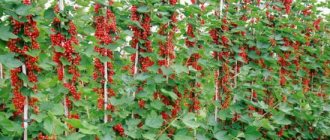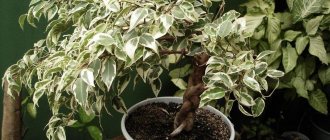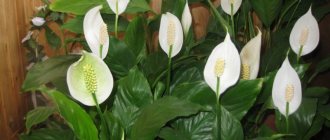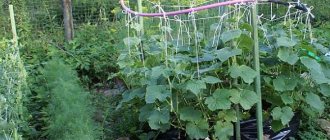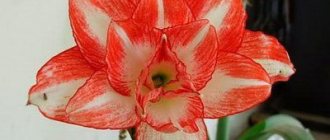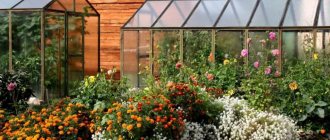Loading…
Loading…
South African amaryllis, which gave its name to a large family of ornamental bulbous plants and its own genus, are not as well known to Russian gardeners as their relatives: hippeastrums, daffodils, galanthus, clivias and onions.
But in the plant’s homeland, as well as in Australia and the southern states of the USA, where amaryllis were exported more than a hundred years ago, the culture has already become common. Slender flower stalks up to 70 cm high can be found not only on alpine hills and in the design of borders, but even on garbage heaps. This is due to the ease of caring for amaryllis and the peculiarities of plant propagation, which produce juicy bulblets, ready for germination, instead of the usual dry seeds.
But in Russian conditions, where the climate is much harsher, it is almost impossible to grow amaryllis in open ground. The plant's large bulbs, up to 10 cm in diameter, are not very frost-resistant.
The air temperature becomes critical for them -9 °C. The elongated green foliage and flowers of the crop suffer even with less frost. Therefore, in the conditions of the middle zone, amaryllis are indoor plants with a pronounced growing season and dormant time.
Brief description of the plant
Amaryllis was obtained by crossing an ancestor from South Africa with hippeastrum. The difference between the two flowers is that amaryllis has slightly smaller flowers and dense flower stalks.
Each year, each bulb produces two peduncles, up to 60 centimeters high. The inflorescences have from 2 to 12 flowers of different shades. Most often there are flowerpots with snow-white, pink or deep purple flowers.
Each flower is funnel-shaped and reaches 20 centimeters in diameter. The petals are pointed at the tips, six on each flower.
Amaryllis blooms at the end of summer, late winter or early spring, depending on the variety. During flowering, the plant emits an amazing aroma.
Garden amaryllis: varieties and varieties
Amaryllis is native to South Africa. In the scientific classification, it is the only representative of the Amaryllidaceae genus. However, through the efforts of breeders, a wide variety of flower varieties have appeared. They are united by a thick, straight peduncle and a lush rosette of long, bright green leaves that grow from the fleshy scales of the bulb. The leaf length is about 30 cm, the width is close to 5 cm.
Amaryllis Durban
However, the varieties of perennials are easy to distinguish from the photo, since the flowers of the varieties differ significantly in shape, structure and color of the petals:
- Durban is a popular large-flowered variety with characteristic flowers, the petals of which are collected in a bell-shaped shape. The color of the petals is rich red at the edge with a white spot at the base.
- The Snow Queen is a spectacular representative of the amaryllis with large white petals, a creamy hue and a dazzling glossy surface.
- Grandior - differs from other varieties in having narrower petals with variegated colors: from light tones to brighter yellows and pinks.
- Macarena is famous for its delightful double flowers with white petals dotted with longitudinal white strokes.
- La Paz is an original variety, the petals of which have a green tint and a red border along the edge.
Features of planting
In order for a plant to grow successfully at home, it is important to choose the right pot for it. It must be stable, since amaryllis, as it develops, “scatters” its leaves in different directions. In addition, the plant has many inflorescences. Therefore, to avoid the flowerpot falling, the pot must be massive and heavy.
The size of the container must correspond to the size of the onion: there should be a gap of no more than five centimeters between the walls and the onion. Since the flower has a developed root system, the distance to the bottom of the pot should be deep enough.
It is best to buy a pot made of unglazed ceramics, since such material breathes well and provides good soil aeration.
The procedure for planting amaryllis in a pot is carried out as follows:
- To plant the plant, purchase a deep, not very wide pot.
- Cover the bottom of the container with a drainage layer, which will protect the roots from stagnation of water.
- Prepare a light, moisture-permeable and at the same time nutritious soil from peat, turf soil and sand, taken in equal proportions.
- Inspect the bulb carefully, remove damaged roots and speckled particles. Place it in potassium permanganate to kill all harmful substances.
- Sprinkle the cut edges with activated carbon crumbs.
- Deepen the bulb into the soil so that a third of it protrudes above the soil surface.
- Water the flowerpot by pouring water into the tray.
To plant amaryllis in a pot, it is recommended to buy the bulb in late autumn or spring. Plants planted in the spring of the year take root best.
To plant amaryllis in open ground, choose a sunny, elevated place on your site. Enrich the soil with humus and organic fertilizers. Plant the plant in the soil in spring or early summer. It is recommended to plant the bulbs at a distance of 30 centimeters from each other, at a depth of 15 centimeters. The hole must be dug so that the long roots of the flower can be freely located in it.
Amaryllis planted in the ground is not watered very often. As soon as the arrow of the flower reaches five centimeters, the plant can be watered more abundantly and the arrow should be tied to a support.
Problem solving
How to make amaryllis bloom
In order for amaryllis to delight you with its magnificent flowers every year, you must give it a rest. The dormant period is very important for this plant. It is at this time that nutrients accumulate in the bulb and future flower shoots are formed. Proper awakening from hibernation and proper care are also important for achieving the goal.
The planted bulb is placed on a bright south-eastern or south-western window and watered with water at room temperature. An adult, well-developed plant will produce a powerful shoot with buds in 1.5–2 months.
What to do if the bulb does not wake up after wintering
Sometimes capricious bulbs do not want to wake up after hibernation. To wake up amaryllis, they resort to this tricky scenario:
- The pot with the sleeping amaryllis is taken out to a warm place (22–25 degrees), but left in the dark.
- Stop watering completely until the flower arrow appears.
- As soon as the arrow hatches, the plant is transferred to the light and begins to be watered little by little.
- When the peduncle reaches a height of 10–15 cm, they switch to the usual regime of water supply and fertilizing.
Diseases and pests
Usually this indoor flower rarely gets sick. The main troubles that can happen to amaryllis are various fungal diseases, as well as pests living in the soil and on the leaves.
Table: signs of diseases and pests of flowers and measures to combat them
| Disease or pest | Signs | How and with what to treat | Prevention measures |
| Red burn (stagonosporosis) | Distinct red spots appear first on the bulb and then on the leaves. |
| Buy only healthy bulbs from trusted places. |
| Anthracnose | A dark brown border and spots appear on the leaves. |
|
|
| Fusarium | The plant withers, the roots rot and gradually die. |
|
|
| Gray rot | Brown spots develop on the leaves, which over time become covered with a grayish coating. |
|
|
| Amaryllis mealybug | The leaves of the plant turn yellow and the plants wither. In the scales of the bulb you can see oval insects about 3 mm long. |
|
|
Flower care rules
In order for growing amaryllis at home to be successful, it is important to follow the rules of caring for it. The plant needs plenty of light, sufficient humidity, a small but deep pot, regular feeding, and protection from pests and insects. When caring for a flower, you must remember that its juice is poisonous, so any manipulation with it is recommended to be done with gloves.
Temperature
During the daytime, the room temperature should be 20 - 22 degrees Celsius, and at night it should not be lower than 18.
During the resting period of the plant, the temperature can be no lower than 10 degrees. To prevent amaryllis from dying, make sure that the room temperature does not fall below 0 degrees, and that there are no sudden temperature changes.
Watering and air humidity
Amaryllis is watered systematically as the top layer of soil in the pot dries. To prevent the bulb from coming into contact with moisture, water is added to the pan.
The flower grows and develops best at 80 percent humidity. In winter, it is recommended to keep the humidity at 50–80 percent to protect the plant from the development of fungal diseases.
Lighting
The flower grows successfully in bright, diffused light. Before 11 o'clock in the afternoon and after 16 o'clock in the evening it is possible for direct sunlight to fall directly on the plant. When the flower begins to actively grow, it needs to be provided with daylight for at least 16 hours. It is best to grow amaryllis on a southeast or southwest windowsill.
Features of fertilizer and feeding
During active plant growth, it needs feeding.
It is recommended to alternately apply organic and mineral fertilizers to the soil. The flowerpot should be fed once every two weeks. As organic fertilizers, you can use bird droppings (per 10 liters, 10 grams each) or mullein (per 10 liters, 250 grams each).
For 1 liter of water you need to take 3 grams of mineral fertilizer. Make sure there is no excess nitrogen in the soil, as it causes red burns on the leaves of the plant.
Pests and diseases
If the stems, leaves, and flowers of a plant are covered with red spots or stripes, it means that it has contracted a fungal disease. Most often, the fungus develops when there is an excess of moisture in the soil. To save the flower, it is treated with Bordeaux mixture or foundation.
Among the pests, amaryllis is often attacked by scale insects and scale insects. Scale insects attack the lower part of the leaves. The foliage below is covered with brown scales, and at the top with a white coating. Scale appears when purchasing new plants.
If lumps of cotton wool are found in the axils of the leaves, we can talk about the flower being infected with a mealybug. To get rid of pests, special chemicals are used.
Diseases and pests
Common diseases and problems of growing plants:
- Amaryllis leaves wither and turn pale due to the process of decay;
- Blackening of flowers is caused by high indoor humidity combined with low temperatures;
- Leaves grow slowly and fall off as a result of amaryllis mealybug infestation;
- White spots on leaves and stems are a sign of the appearance of a parasite such as a mealyworm;
- Bulb rotting occurs after infection with a narcissus fly or onion mite;
- The formation of brown spots on the leaves is caused by a pest - the false scale insect;
- leaves turn yellow when there is excessive soil moisture, as well as when aphids appear.
Other pests include thrips and mealybugs.
Bloom
When growing amaryllis at home, it blooms in winter, in February. Too large bulbs may bloom in April or May
By observing some nuances when growing a flowerpot, you can influence the beginning of its flowering. For example, 7 weeks before the expected date of bud setting, after a rest period, bring pots of flowers into a warm room, provide good lighting and gradually begin to water. It is necessary to water taking into account the activity of foliage growth and the dryness of the air in the room. It is important to ensure that there is no excessive soil moisture - the flower may die.
When can you replant amaryllis at home? Amaralis flowers replanting planting
Amaryllis and baby bulbs, what to do after flowering
How to replant amaryllis at home after flowering or after winter? The matter is not at all difficult, you just need to follow some rules and follow the advice of professionals whom you can trust. Next, you can find out a certain sequence of actions that can provide the most advantageous result.
- Bulb processing
- Pot for amaryllis
- Watching the blossom
- After flowering
Bulb processing
At the beginning of planting, carefully inspect your bulbs. It is necessary to remove all dry and darkened layers before white tissue appears; this will provide an influx of air and help produce the necessary chlorophyll, which will provide energy to stimulate the growth of the dormant specimen. Invisible foci of putrefaction may also appear there, diseases or young shoots may appear. Lubricate the damaged areas with brilliant green, you can also use Fitosporin. After cleaning, place the amaryllis bulbs in a suitable fungicide for half an hour, this can be saturated potassium permanganate or Bordeaux mixture. Then mandatory drying for about a day.
Pot for amaryllis
The most important thing is the right pot. It should be quite heavy, stable, wide at the bottom, and slightly narrowed at the top.
These precautions are needed to prevent an accidental gust of wind or a slight snag from turning your handsome dog over. Naturally, use ceramic and unglazed, this makes it easier to breathe and ventilate
Depending on the diameter of the onion, one or several pieces are planted, but at a distance of ten centimeters from each other.
The bottom of the container should have a large hole for drainage; a sufficient amount of drainage (expanded clay, small pebbles, pieces of shards) is immediately poured, then a layer of sand, which serves as an additional guarantee against stagnation of excess liquid. Then fertilize the soil, consisting of turf, humus and leaf soil; place your favorite fertilizer for flowering plants in it.
The soil for amaryllis must be selected correctly
- Turf
- Humus
- Leaf ground
- fertilizer
And only after all the procedures is the bulb placed with the blunt part down; it should be visible on the surface of the compacted soil mixture by one third. Planting Amaryllis belladonna ends with a place of residence that should be noticeably warm and illuminated.
Watching the blossom
What types of flowering do amaryllis have?
The process from planting to the appearance of flowers in a strong and healthy bulb takes up to two months. And you can admire arrows with three or five gorgeous colors. To ensure blooming lasts as long as possible, place in a cool room and out of direct sunlight. The third peduncle that may appear will not please you, since you will break it off to avoid over-exhaustion of the bulb; the same is done with the second arrow if the bulb is small or weak.
Recommended. After the first bud blooms, cut off the arrow and place it in a narrow, elegant vase, replacing the water daily. The next buds will bloom almost equally, whether in a vase or in a pot, only in this way you protect your onion from unnecessary exhaustion.
After flowering
Surely, many of you, while admiring the beautiful and exotic flowers, do not think about the future fate of your pet, but the time comes when the amaryllis has faded, you have no idea what to do next and, precisely, now the advice of experts will come at just the right time. After flowering has ended or you have cut off the flower stalks, stop abundant watering and replace it with the one discussed above.
There is no need to trim the leaves yourself, because through them all the accumulated nutrients will pass into the bulb, which is very important for subsequent development. We transfer the pot to a dark place with a low temperature of +10°C (minimum)
The rest period should last three to four months, otherwise Amaryllis will not be able to accumulate strength for subsequent development and may die after some time.
Rest
When growing amaryllis correctly, for its abundant flowering, it is important to give the flowerpot a rest, giving it periods of rest.
It is necessary to prepare the plant for rest in the second half of summer. Gradually reduce watering and fertilizing. In the second half of autumn, stop watering the flower altogether. By this period, the amaryllis will shed its leaves and begin active growth of the bulb. Therefore, it is not recommended to pre-cut off undried leaves.
Since during the resting period of the plant, its root system continues to grow, the flower should be watered once every two weeks. Store amaryllis during the dormant period in a dark room with an air temperature of 15 degrees.
Amaryllis should rest for two months to gain strength for new, abundant flowering. If you do not give a flower a full rest, it may lose its beauty and strength, as a result of which it will not be able to bloom the buds that have been thrown into bloom.
How to plant seeds
When planting amaryllis seeds, pay attention to their expiration date. The highest percentage of seedlings will come from freshly harvested seeds. Please note that their maximum shelf life is no more than a year. You can distinguish the age of seeds by their appearance: the older they are, the smaller they are, with a dry shell. Pre-sowing treatment of seed material will be useful and even necessary if you have chosen old seeds. They should be soaked to swell the impeller a little, which helps the plant spread through the air. And the embryo, a small onion inside, gained a little strength.
photo: © blogspot.com
The seeds are soaked in a small bowl. A napkin is placed at the bottom of the container. On top are seeds in one layer. The napkin with the seeds must be wetted. Water for irrigation needs to be warm or room temperature, never cold. Place the container in a warm place. After 2 days we will see that the seeds have swollen and increased slightly. Now they are ready to plant. If the seeds are young, everything is much simpler. Take a container approximately 5cm deep. Fill it 2/3 full with soil. Spread the seeds over the surface and sprinkle with soil. Immediately water the “bed” with a spray bottle. After germination, seedlings will be able to grow in such a container for no more than 3 months. Then they need to be transplanted into a deep container. It is important for the plant to have a long root. Amaryllis does not require a greenhouse effect when sown with seeds. The best time for landing will be May. Moderate warmth and long daylight hours are all that is required for seed germination.
When growing amaryllis from seeds, remember that the plant will begin to bloom only after five years.
Problems when growing a flower
When growing amaryllis you may encounter the following problems:
- red spots or streaks on the plant indicate a fungal infection. Fungus can appear due to improper watering when water gets on the plant itself. To get rid of it, the flower is sprayed with special medications;
- When the flowers darken or turn black, you can see that the plant is very cold or damp. To solve the problem, move the flower pot to a bright, warm place with a comfortable percentage of humidity;
- pale leaves may indicate that the soil is too wet. To avoid rotting of the roots and the entire plant, it should be urgently transplanted into new high-quality and nutritious soil;
- if the petals are pale, move the plant to the shade so that it does not suffer from direct sunlight;
- due to lack of light or nutrients, lack of a rest period, deeply planted bulbs, diseases of the root system, amaryllis may not bloom. Old plants often face this problem. To solve it, replant the flower, remove the resulting bulbs;
- due to excess moisture or attack by pests, amaryllis foliage may turn yellow or become deformed.
Growing for forcing
Hippeastrum is also grown for forcing. Moreover, you can achieve its flowering not only at the end of summer - beginning of autumn, but also for the New Year holidays. Having slightly shortened the dormant period, bring the flower pot into a warm room and wait for the flower arrow to appear. After this, begin to intensively water the hippeastrum.
For rest, forcing the peduncle and budding, the hippeastrum will need about 13 weeks. The dormant period takes approximately 2.5 months, and from the moment when the flower arrow appears until the moment when the hippeastrum blooms, about 3 weeks will pass. So for forcing by the New Year, you need to provide the hippeastrum bulb with a period of rest from October.
- Photos of laurel species with names
Reproduction methods
Amaryllis reproduces in different ways. The time when the plant can be planted in a pot or in open ground depends on the method of propagation. If you decide to grow a flower from seeds, it will bloom for the first time five years after sowing.
Divide the onion
Divide the bulbs after the amaryllis has completely bloomed. Cut off the neck and leaves from the bulb. Divide the remaining portion into slices. Insert thin long knitting needles, 15 centimeters each, into the slits. A flower pot is grown in the same way as a growing amaryllis. It is recommended to water as the soil dries out. In spring, the grown bulbs can be transplanted into different pots.
Reproduction by children
When amaryllis is transplanted, daughter bulbs often remain. Children do not need a period of rest, so they are immediately planted in the soil. After planting, the bulbs are systematically watered and fertilized. Since the daughter bulbs grow greatly within two years, it is recommended to use a pot for planting them the same size as for an adult plant. Three years after planting, the first flowers will appear.
Propagation by seeds
To make amaryllis seeds, pass a brush from the stamen to the pistil to transfer the pollen. After a month, the seeds will form and ripen in the basket. Sow the collected seed into the prepared soil and place the container in a warm place with diffused lighting. When the shoots appear and the seedlings become strong, they can be transplanted into separate containers.
When propagating by seeds, it is important to take into account that amaryllis may lose its maternal characteristics.
Now you know how to transplant indoor amaryllis flowers, as well as what care they need. It is important to create all the comfortable conditions for growing a flower so that it blooms profusely and for a long time. With a properly organized transplant, the plant begins to grow and develop better, and its flowering also improves. When caring for amaryllis, it is important to give it periods of rest.
History of the flower and description of appearance
The name of the amaryllis flower, translated as “beautiful,” was mentioned in history by Carl Linnaeus, who described the wonderful flower gardens of Amsterdam in 1753. Then amaryllis became widespread in Europe, from where it was brought from Africa, and for three centuries in a row its popularity has not subsided.
The plant of the Amaryllis genus is a perennial. This is a bulbous flower, with long straight leaves reaching a length of 60 cm and a width of up to 3 cm. Amaryllis leaves are located one above the other. The bulbs have an oblong shape resembling a pear, the length of the bulb is 10-12 cm.
Amaryllis bulbs can produce 1-2 stems, on which large inflorescences of bell-shaped flowers subsequently appear. The shades of peduncles are very diverse: bright red, purple, pinkish, beige. The flower when open reaches a size of up to 8 cm. The petals are semicircular, with sharp ends, in the amount of 6 pieces.
Popular varieties of amaryllis
Flower breeders are actively developing the amaryllis species and developing or improving new varieties and palettes. The most popular varieties of amaryllis today:
- Double amaryllis are known for their large inflorescences: DOUBLE DRAGON, DOUBLE ROMA. Also popular flowers with enlarged buds include: BLACK PEARL, WHITE BABY, MOON LIGHT and others.
- Amaryllis with unusual shades: TEMPTATIA, CLOWN, PIZAZZU and others.
- Amaryllis with a unique flower shape, another name from breeders is “spiders”: SPOTTY, LIMA, GRANDEUR and others. The disadvantage of these species is that due to the modified shape of the petals, the bud itself is several times smaller than its brothers, but florists love spiders for their extraordinary appearance in compositions.
Below are photos of amaryllis.
Growing from seeds
Garden balsam - planting and care in open ground
This method of reproduction is rarely used because it is complex and is not always successful.
Important! Amaryllis grown from seeds loses the characteristics of the parent specimen and blooms only in the 7th year. The seeds quickly lose their viability, so they should be planted immediately after collection.
Seeds are obtained as a result of cross-pollination, which is produced using a brush (passed over the flowers). Ripening occurs after 2-3 months.
Propagation by seeds
Sowing is carried out as follows:
- The seeds are removed from the box.
- A drainage layer about 2 cm thick is placed in the holes.
- A nutritious soil mixture is poured on top (you can use the same as for the bulbs).
- The substrate is compacted.
- Sowing is carried out.
- There should be a distance of up to 1.5 cm between seedlings.
- The soil is sprayed with a spray bottle.
After planting, it is necessary to ensure that the soil does not dry out or become waterlogged.
Kinds
Amaryllis comes in two types.
Amaryllis Belladonna
Amaryllis Belladonna
The most popular species grown by gardeners. The green stem of the plant reaches 50 cm. The leaves, 3 cm wide and 50 cm long, remain green all winter, they are arranged in pairs. Leaf blades appear in autumn and die off in late spring. The plant goes into a dormant state. In August-September, the bulb (its diameter is 5-10 cm) produces a bare peduncle, sometimes there can be two of them.
The umbrella-shaped inflorescence consists of 2-12 funnel-shaped flowers. Each individual flower has 6 petals, the flower size is from 6 to 10 cm. The color can be different - white, pink, red and even purple. Peduncles have a pleasant, delicate aroma.
Amaryllis paradisicola (Amaryllis Sarniensis)
Amaryllis paradisicola (Amaryllis Sarniensis)
This type of amaryllis grows in nature on rocky, dry areas in the mountains. Up to 21 flowers bloom on one leafless peduncle. The flowers are deep pink in color and have a strong aroma. It is not grown as an indoor crop.
Care at different times of the year
This “pet” from Africa has clearly defined periods of dormancy, active growth and flowering, so you need to care for it based on this.
in spring
At the end of February - beginning of March, containers with bulbs are transferred from the pantry to the windowsills, and you can also begin watering so that the bulbs “wake up” and foliage growth is activated.
Many gardeners are specially engaged in forcing amaryllis for certain holidays; to do this, it is enough to move the pots with bulbs to a bright, warm room a couple of months before the desired date for the appearance of flowers and resume watering.
The frequency and amount of watering depend on the general condition of the flower and how dry the soil in the containers is. During the period of active growth of the vegetative mass, organic matter and minerals should be added to the soil so that the amaryllis has enough nutrition before the onset of dormancy.
In summer
In the last ten days of May - the first ten days of June, watering is carried out as the upper part of the soil dries out. Fertilizers should be applied in the same way as in the spring - once every 13 days. You should not use fertilizers containing a lot of nitrogen, because this element often causes burns on the bulbs.
in autumn
In the autumn, such a green “pet” begins to prepare for a state of dormancy, so you need to stop adding fertilizers to the soil, and also gradually reduce the amount of watering, completely stopping it in the last ten days of October - the second ten days of November.
At this time, the flower begins to shed its foliage, which completely falls off by the end of November. You should not trim yellowing leaves - during the process of yellowing and falling, all the beneficial substances from the foliage pass into the bulb, where they are stored until the next flowering period.
It may be that the last few leaves do not die off even in early November. Then they can be bent to the soil, or cut off at the surface, saving space on the shelves, where containers with bulbs are put away for storage until spring.
in winter
At the beginning of December, containers with plants are “hidden” in a cool place where the temperature should not stay below 0⸰C. But the optimal temperature regime where sleeping pets are kept should be around +6-11⸰С . Such places can be: a dark, cool pantry, a winter garden, or a heated greenhouse.
Important! These bulbous plants are not resistant to frost, and any drop in temperature below 0⸰C can be disastrous for them.
There is no need to dig the bulbs out of containers for the winter; they will overwinter well in the ground. Although the plant is dormant, its roots periodically require moisture, so a small amount of water is added to the pots every 17-21 days.
The bulbs are kept in this state for at least 2-2.5 months.
Amaryllis: feeding
Once a week they are fed with mineral and organic fertilizers. Feed the flower every 10-14 days. The application of mineral and organic fertilizers can be alternated. As a rule, fertilizers are applied to moist soil with a pH of 6.0 to 6.5
You can also feed amaryllis with mixtures prepared according to the following recipes:
- 300 g of mullein per 10 liters of settled water;
- 3 g of mineral fertilizers per liter of water;
- 80 g of poultry droppings per 10 liters of water.
From mineral fertilizers, you should choose those that contain large amounts of phosphorus and potassium. This is what this plant needs most. Nitrogen and its components should be 2-3 times less than potassium and phosphorus. Nitrogen causes strong growth of foliage and has no effect on bud formation and flowering.
Below are several options for fertilizing for plants grown in large areas, the dosage is given per square meter:
- 200 magnesium sulfate.
- 200 grams of ammonium nitrate.
- 800 grams of potassium salt.
- 600 grams of superphosphate.
The soil can also be enriched with perlite. For example, on soil consisting of leaf and turf soil, taken in two parts, take one part of perlite.
Amaryllis and its “double” hippeastrum - eternal confusion
Since they are really constantly confused and because of this they do not get what they would like, you need to learn to distinguish between these two very similar flower crops.
Amaryllis
- A dense and void-free peduncle with a slight purple tint.
- Its length is 40-60cm.
- Strong aroma.
- The natural flowering period is late summer - early autumn.
- The diameter of the inflorescence is 10-12 cm.
- The number of buds is up to 12 pieces (usually 4-6).
- Natural color is all shades of pink, ranging from almost white to almost red (not to be confused with hybrids!).
- Pear-shaped bulb with ash-gray scales, slightly “curly” along the upper edge.
- Leaves appear only after flowering.
Hippeastrum
- The peduncle is a hollow tube, which is easily identified when pressed. It has a grayish-brown tint.
- Its length is 60-70cm.
- There is practically no smell.
- The natural flowering period is late winter - early spring.
- The diameter of the inflorescence is 6-8 cm.
- The number of buds is no more than 6 (usually 2-4).
- Natural colors - in addition to pink, red, orange, yellow, light green, purple and all kinds of combinations thereof.
- The bulb is round or slightly elongated downwards, with a slight flattening on the sides. Outwardly similar to ordinary onions, but white or slightly greenish in color.
- During flowering, it throws out a large, belt-shaped leaf.
Like many colorful plants, amaryllis is poisonous. Its poison is concentrated in the bulb. In small doses it is used in folk medicine as an anesthetic, and arrowheads smeared with it became lethal among African natives.


